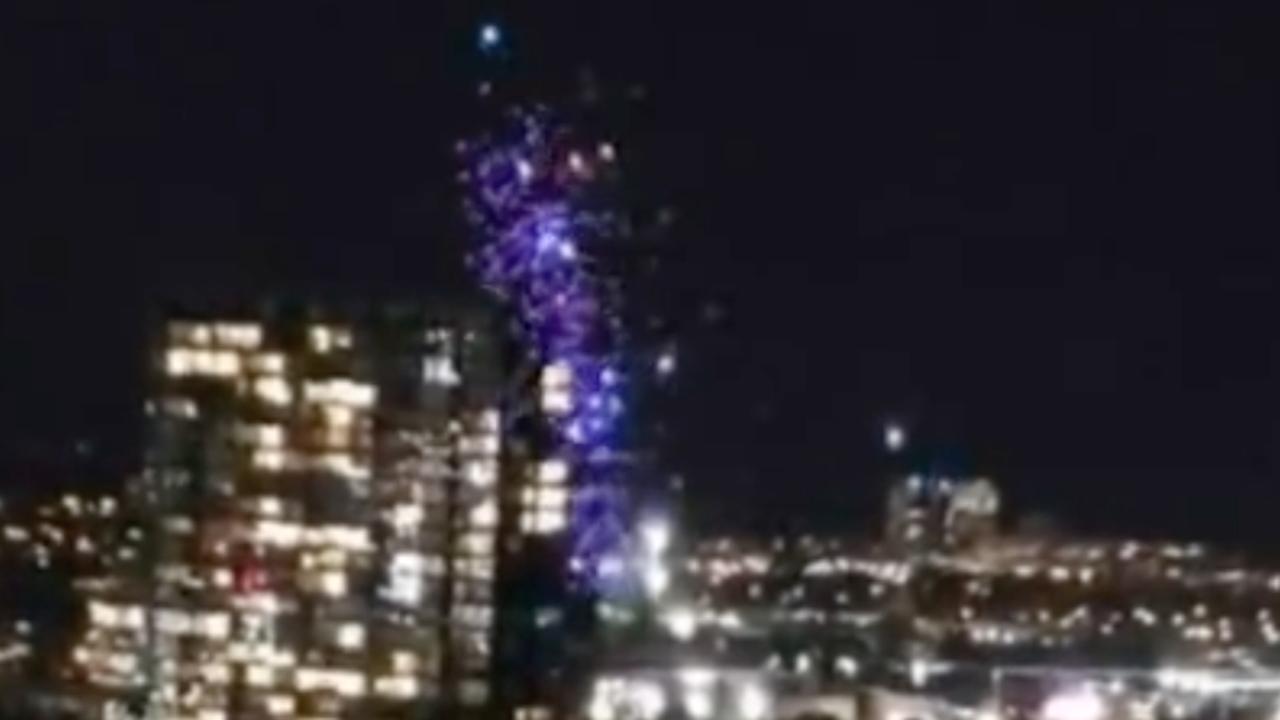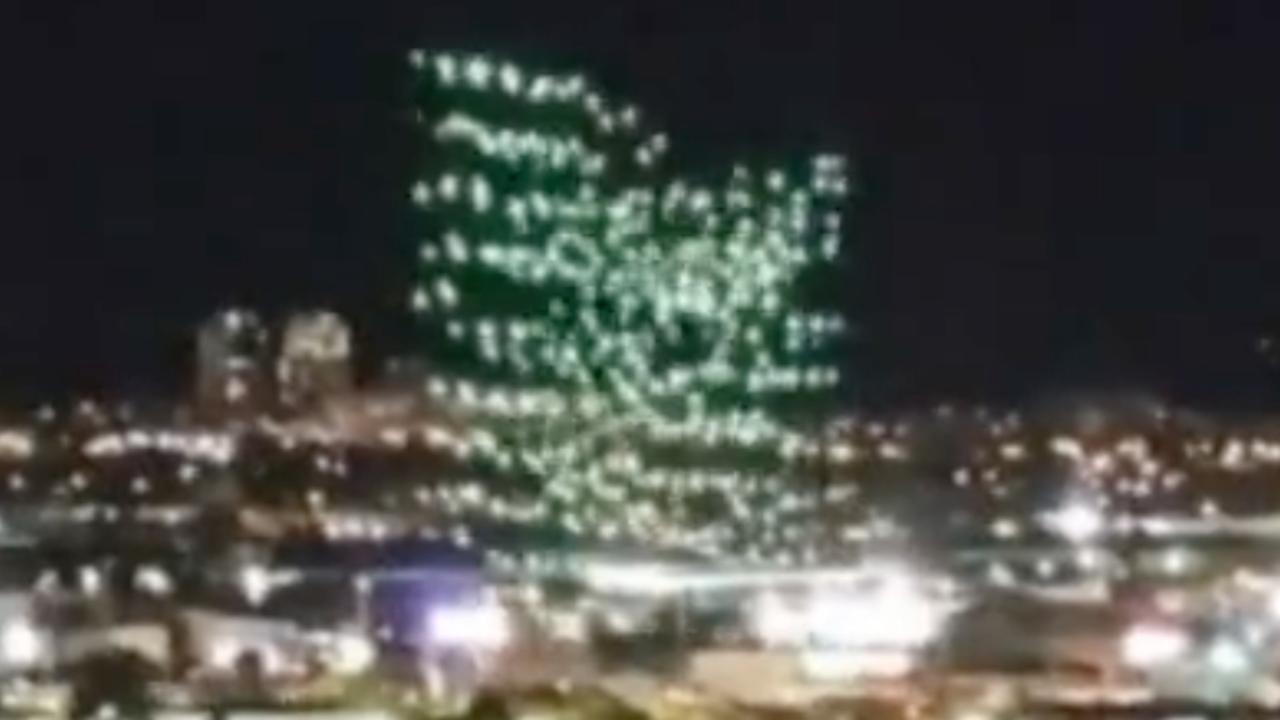Orlando drone show malfunction: A spectacular aerial display turned unexpectedly chaotic when a series of malfunctions disrupted a planned drone show in Orlando, Florida. This incident raises critical questions about safety protocols, technological reliability, and the future of large-scale drone performances. The event, which took place on [Insert Date and Time], captivated and then shocked onlookers as the carefully choreographed flight patterns devolved into a scene of erratic movement and near-misses.
This analysis will delve into the technical aspects of the malfunction, its impact on the audience and organizers, and the potential improvements needed to prevent similar incidents.
Reports of an Orlando drone show malfunction surfaced recently, raising concerns about the technology’s reliability in large-scale displays. Thankfully, these incidents seem to be exceptions, as evidenced by the generally positive reviews of the orlando drone show itself. Further investigation into the malfunction is needed to ensure future shows run smoothly and safely for both the audience and the operators.
We will examine the specific drone models used, the nature of the communication failures (if any), and the potential contributing factors such as weather conditions or software glitches. The analysis will also cover the response from event organizers and emergency services, the public’s reaction, and the subsequent media coverage. Finally, we’ll explore potential solutions and preventative measures to enhance the safety and reliability of future drone shows.
Orlando Drone Show Malfunction: A Comprehensive Analysis
The recent malfunction during a drone show in Orlando has sparked discussions regarding the safety and reliability of such large-scale aerial displays. This article delves into the event, examining its technical aspects, impact, and potential preventative measures to ensure future safety.
Recent reports detail a significant technical issue during a recent Orlando drone show, causing a disruption to the planned spectacle. For more details on the specifics of this event, you can check out this informative article about the orlando drone show malfunction. The malfunction highlights the complexities involved in large-scale drone displays and the potential for unforeseen circumstances.
Event Details and Circumstances
The incident occurred on [Insert Date] at approximately [Insert Time] during a drone show at [Insert Location in Orlando]. The show featured approximately [Insert Number] drones, each equipped with [Insert Drone Model and Specifications, e.g., high-intensity LED lights, GPS modules]. The intended flight pattern involved intricate formations, including [Insert Description of Flight Patterns, e.g., dynamic geometric shapes, representations of animals, etc.].
The malfunction began when a cluster of drones [Insert Specific Description of Malfunction, e.g., lost synchronization, resulting in erratic movements and near-collisions]. Some drones experienced communication failures, while others appeared to suffer from GPS interference, causing them to deviate from their programmed paths. A timeline of events is as follows:
- [Time]: Show begins, initial formations proceed as planned.
- [Time]: First signs of desynchronization observed in a section of the drone swarm.
- [Time]: Multiple drones deviate significantly from their flight paths.
- [Time]: Emergency protocols activated; show halted.
- [Time]: All drones successfully landed or were recovered.
Technical Aspects of the Malfunction
Several technical factors may have contributed to the malfunction. Possible causes include software glitches in the drone’s flight control systems, hardware failures (such as motor malfunctions or GPS receiver errors), or external interference (e.g., GPS jamming or radio frequency interference). The drone’s control system, likely reliant on a combination of GPS, onboard sensors, and radio communication, may have experienced a cascading failure.
While safety measures, such as redundancy in control systems and emergency landing protocols, were presumably in place, their effectiveness in this instance was limited. A hypothetical flowchart outlining the sequence of events could be as follows:
[A textual description of a flowchart would be provided here, detailing the sequence of events starting from the initial command signal, to potential interference, system failures, and ultimately the malfunction and emergency response. The description should illustrate branching paths representing different failure points.]
Impact and Response
The malfunction caused immediate alarm and concern among the audience. While no serious injuries were reported, the sudden disruption and erratic drone movements undoubtedly created a sense of fear and uncertainty. Event organizers swiftly initiated emergency protocols, including [Insert Details of Organizers’ Response, e.g., halting the show, activating emergency lighting, and contacting emergency services]. Emergency services responded promptly to ensure public safety.
The extent of any property damage is still being assessed. A comparison to similar incidents follows:
| Location | Date | Cause | Impact |
|---|---|---|---|
| [Location 1] | [Date 1] | [Cause 1] | [Impact 1] |
| [Location 2] | [Date 2] | [Cause 2] | [Impact 2] |
| [Location 3] | [Date 3] | [Cause 3] | [Impact 3] |
Preventive Measures and Future Implications, Orlando drone show malfunction
Improving drone show safety necessitates a multi-faceted approach. This includes enhancing redundancy in control systems, implementing more robust communication protocols, and integrating advanced sensor systems for obstacle avoidance and environmental monitoring. For example, a fail-safe system could incorporate multiple independent control channels and autonomous emergency landing capabilities. Different drone control systems, such as centralized vs. decentralized architectures, offer varying levels of reliability.
A new safety system might incorporate a tiered approach, with redundant communication links and multiple independent GPS receivers, along with a fail-safe mechanism that prioritizes safe landing procedures in case of any system failure. The system could also incorporate real-time monitoring and predictive analytics to identify potential risks before they escalate into full-blown malfunctions.
The Orlando drone show malfunction highlights the inherent risks in large-scale drone displays. The incident prompts reflection on similar events, such as the recent kazan drone attack , which underscores the potential for both accidental and intentional misuse of drone technology. Ultimately, improving safety protocols for both entertainment and military applications remains crucial following the Orlando malfunction.
Public Perception and Media Coverage
Social media reacted swiftly to the incident, with a mixture of concern, amusement, and criticism. News reports varied in their tone and focus, some highlighting the safety concerns, while others emphasizing the technical complexity of the event. The long-term effect on public perception of drone shows remains to be seen, but the incident undoubtedly raises questions about safety regulations and technological reliability.
Key takeaways from media coverage include:
- Increased public awareness of potential risks associated with large-scale drone shows.
- Calls for stricter safety regulations and improved technology.
- Debate surrounding the balance between technological innovation and public safety.
- Focus on the need for robust emergency response protocols.
The Orlando drone show malfunction serves as a stark reminder of the inherent risks involved in large-scale drone operations. While the incident thankfully resulted in no serious injuries, it highlighted the crucial need for robust safety protocols, rigorous testing, and continuous technological advancements in drone control systems. The analysis presented here underscores the importance of proactive measures to mitigate future risks and ensure the safe and successful execution of drone shows.
Learning from this event is paramount to advancing the industry responsibly and maintaining public trust.
Questions and Answers: Orlando Drone Show Malfunction
What type of drones were involved in the Orlando drone show malfunction?
Specific drone models will be detailed in the full report. Information is currently being gathered from event organizers.
Were there any injuries reported as a result of the malfunction?
This will be detailed in the full report. Initial reports suggest no serious injuries.
What was the estimated cost of damages from the malfunction?
A full cost assessment is pending. This will be included in the complete analysis.
What is the likely timeline for a full investigation into the cause of the malfunction?
A detailed investigation is underway, and a timeline will be released by the relevant authorities once it is determined.


